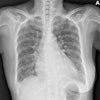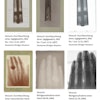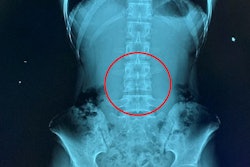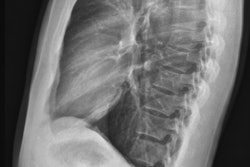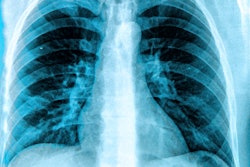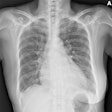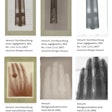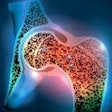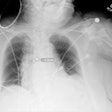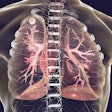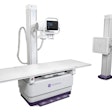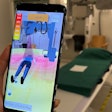Is x-ray technology still alive, or is it ready for retirement?
These questions were resolved in the first 10 minutes of an ECR 2024 session on the subject. "I have just one conclusion," declared Prof. Dr. Ernst Rummeny, professor emeritus of radiology at the Technical University of Munich. "X-ray is more alive than ever!"
Continuous technology improvement has kept x-ray medical imaging alive, starting with Austrian chemistry professor and photographer Josef Maria Eder, who, just a few months after Wilhelm Conrad Roentgen discovered the x-ray in November 1895, produced a superior x-ray image of the human hand to that made by Roentgen. Eder had a better generator.
"Better images relate to technical innovation. That is what we have been doing and continue to do today," observed Rummeny. "Improvements in x-ray imaging are made by better x-ray generation and x-ray detection techniques."
Rummeny described the evolution of CT, invented by biomedical engineer Godfrey Newbold Hounsfield in 1971 at Atkinson Morley Hospital in south-west London. One year following its clinical introduction at the hospital, the first commercial head CT scanner was launched by EMI. A five-minute-long acquisition of a head CT scan producing a single grainy image of a brain has evolved into CT scanners producing hundreds of exquisitely detailed images in seconds.
"Improvements in CT have been continuous over 50 years. Emergency departments today would be unthinkable without CT scanners," he said.
Innovation, development, and adoption of AI for x-ray applications are moving in a similar, albeit accelerated path. Prof. Erik Ranschaert, PhD, visiting professor at Ghent University in Belgium and former president of the European Society of Medical Imaging Informatics (EUSOMII), likened the combination of AI and x-ray as potential "a perfect wedding of synergy."
He explained that according to Prof. Roland Summer, head of the Imaging Biomarkers and Computer-Aided Diagnosis Laboratory at the National Institutes of Health Clinical Center, "Around the mid-2010s AI really started to be seen as a potential solution to the daily challenges faced by radiologists.” When talking about the evolution of the AI-radiology relationship, Prof. Bram van Ginniken from Nijmegen, the Netherlands, said in a lecture in 2018 that "AI will not only lead to powerful tools for radiologists but also automate certain tasks completely and it will provide image interpretation services to clinicians who then no longer need a radiology report to make treatment decisions.”
In other words, there were other previously troubling opinions circulating that pointed to an impending divorce rather than a marriage, Ranschaert continued. The “explosive” developments with large language and foundational models were described as elements that can give a new boost or new energy to the relationship. A new phase with exciting chemistry has now begun, and it may accelerate the relationship. This phase with new relationship energy (NRE) is also commonly known as the honeymoon phase, he added.
The past six years have seen continuous evolution, with ongoing research and development aimed at enhancing accuracy, efficiency, and applicability. The most used AI solutions today are in neurology, chest imaging, musculoskeletal imaging, and mammography.
AI and radiology are in an engagement phase of courtship and marching toward symbiosis or marriage, Ranschaert said. What could offset this? The total autonomy of AI replacing radiologists without further collaboration.
Studies and real-world evidence have started to demonstrate the positive impact of AI on radiological practices, including improved diagnostic accuracy efficiency and patient outcomes. The Mammography Screening with Artificial Intelligence (MASAI) clinical trial, conducted in 2021-2022 with more than 80,000 participants, showed that AI-supported mammography screening resulted in a cancer rate detection that was improved by 20% compared with double-reading without AI, without increasing the recall rate. Most importantly, the use of AI produced a 44.3% reduction in workload.
AI applications in radiology are becoming part of the standard toolkit. Fourteen hospitals used AI in clinical practice in the Netherlands in 2020. This number increased to 23 by 2023. A survey of 42 Dutch hospitals showed that 68% have formed policies on implementing AI, with a main driver being improvements in quality of care. Their major concerns about implementation are clinical validation, integration, and acceptance.
Explosive developments in deep learning large language models and multimodal vision language foundation models are about to radically change the profession and role of the radiologist, Ranschaert predicts. "We are at the dawn of a new age."
Human-centered AI has emerged recently as a practical paradigm for human-AI collaboration. Symbiosis requires a synergistic relationship between radiologists' expertise and AI computational power to enhance decision-making capabilities. Data science and technical expertise must be combined, with a strong understanding of the clinical context in which physicians operate as well as the cognitive and emotional demands of their daily realities.
For radiology, prerequisites include well-designed nondisruptive user interfaces, collaborative AI, and radiologist workflows. Transparency in the decision-making processes and insight into the confidence levels for AI predictions are imperative. AI needs to provide alerts when its confidence levels are low or it detects human error.
Current and future challenges are how radiologists will interact with AI tools and how tasks should be defined. Ranschaert emphasized that this domain needs to be studied more intensively to shape guidelines and ensure that this development is beneficial to society.
"The synergistic human-AI pair can end up better than each might be on their own," he concluded. noting that relations between the AI and radiology communities is a growing process, and it's a relationship that needs to be improved on or fine tuned. "Today this relationship is in a dynamic evolving state, promising a future where AI and radiology are deeply integrated working synergistically to improve patient care and healthcare outcomes."


